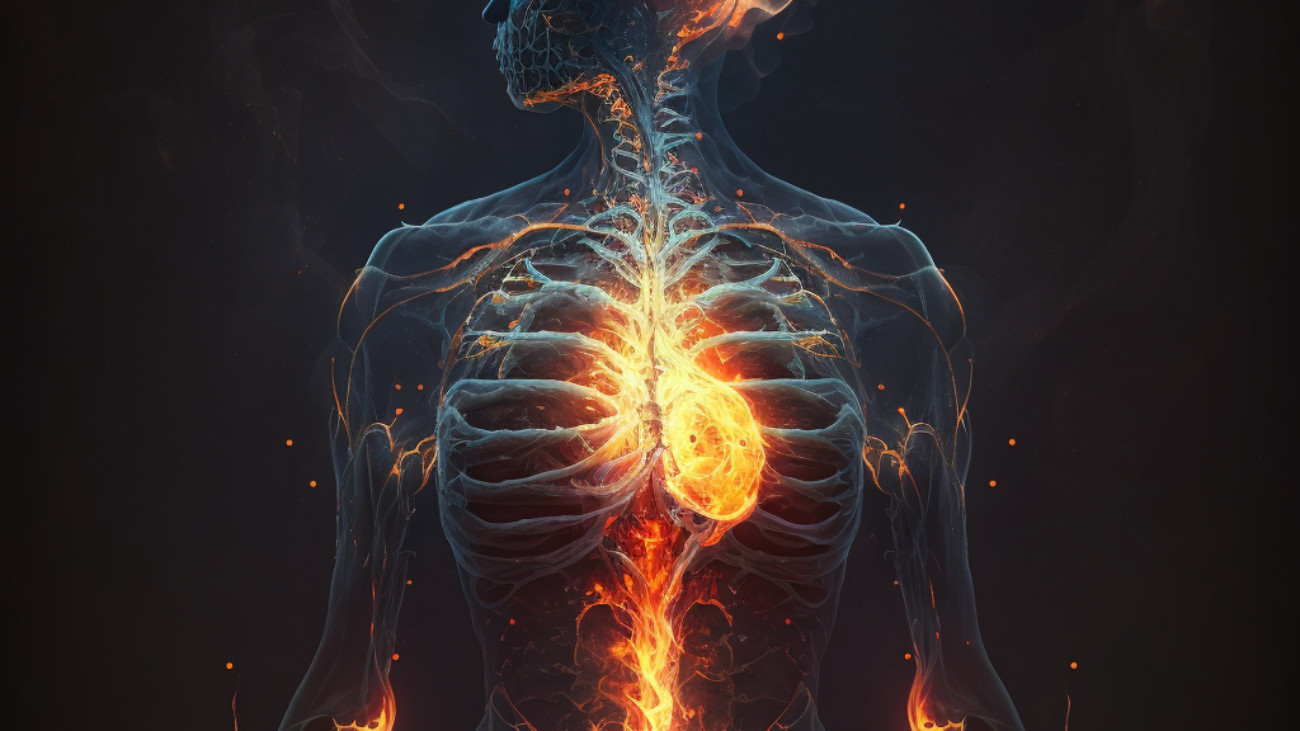In each situation, focus on walking a path of maximum integrity, conscious of your appointed orbit.
Magick and Dwelling
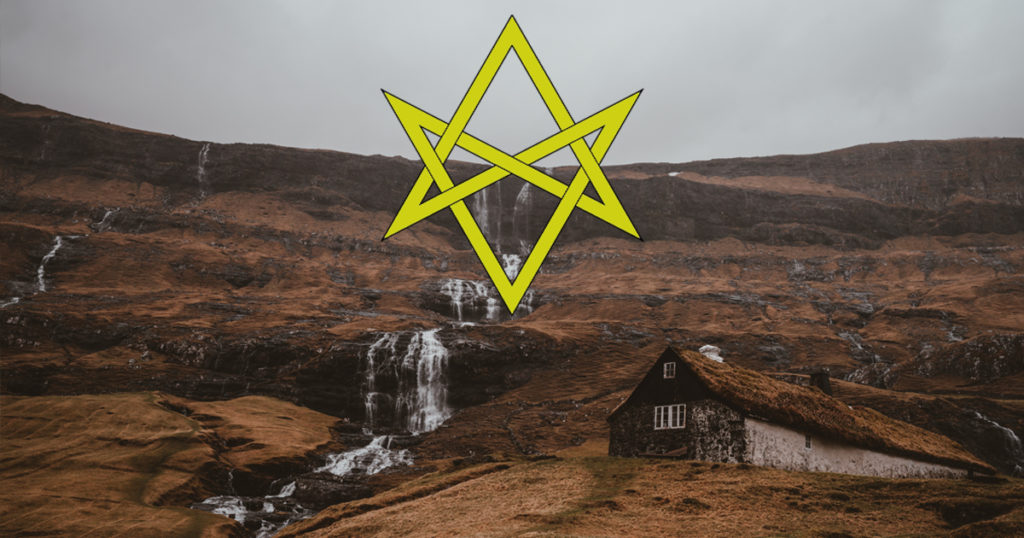
One of the conspicuous features of the coronavirus pandemic is how little control we have over the situation.
We’re facing a novel virus, one which has never infected human beings before. We have no vaccine. We have no treatments.
The one non-pharmacological intervention we do have—social distancing—is leaving a lot of people feeling powerless. They can’t engage in the activities that bring them pleasure. They can leave their houses only sparingly. All we’re left to do now is wait, and that can feel disempowering.
But even in situations that feel disempowering, we are duty-bound to understand circumstances as best we can and to bring them under our control.
Learn to understand clearly how best to manipulate the energies which you control to obtain the results most favourable to it from its relations with the part of the Universe which you do not yet control. Extend the dominion of your consciousness, and its control of all forces alien to it, to the utmost. Do this by the ever stronger and more skilful application of your faculties to the finer, clearer, fuller, and more accurate perception, the better understanding, and the more wisely ordered government, of that external Universe.
—Aleister Crowley, “Duty”
If you’re not a virologist or a physician, chances are it may feel as though there is very little to exert your control over. But times like this, when so much control has been taken away, it makes sense to concentrate on those things over which we still do have some or even complete control. One of those things is our dwellings.
As I said in my recent video, in order to keep your body safe, you need to keep the virus out of your home. Another way of saying this is that you must expand your sense of self so that it also includes the place where you dwell.
This is not a dimension of doing one’s will that should be taken lightly in any case. Commenting on the Magus card in the Book of Thoth, Crowley says:
This card therefore represents the Wisdom, the Will, the Word, the Logos by whom the worlds were created. (See the Gospel according to St. John, chapter I.) It represents the Will. In brief, he is the Son, the manifestation in act of the idea of the Father. He is the male correlative of the High Priestess. Let there be no confusion here on account of the fundamental doctrine of the Sun and Moon as the Second Harmonics to the Lingam and the Yoni; for, as will be seen in the citation from The Paris Working, (see Appendix) the creative Mercury is of the nature of the Sun. But Mercury is the Path leading from Kether to Binah, the Understanding; and thus He is the messenger of the gods, represents precisely that Lingam, the Word of creation whose speech is silence.
Here we find Crowley binding together several concepts:
- The will (the central theme of the spiritual system of Thelema).
- The Son, which as part of the Holy Trinity represents the manifestation in act of the idea of the Father. Crowley here explicitly references John I where we read,
“In the beginning was the Word, and the Word was with God, and the Word was God. He was with God in the beginning. Through him all things were made; without him nothing was made that has been made. In him was life, and that life was the light of all mankind. The light shines in the darkness, and the darkness has not overcome it.”
In other words the Son—and hence the will—is not to be thought of as just a particular person (say, Jesus of Nazareth) but something more akin to the invariant structure of the cosmos. It is that act of the Father (the principle of consciousness) whereby the universe becomes intelligible. - To say that the Son renders the universe intelligible to us is to say that it is by virtue of the Son that the universe is anything at all to a consciousness like ours. It is that which allows things to be what they are, to shine forth as phenomena in their own right. Thus the creative Mercury or Son is of the nature of the Sun (that by means of which the sensible is made sensible).
- This relationship between manifestation or shining forth and speech or the Word is given in the Greek word, logos. Logos is related to légō, which means “I put in order, arrange, gather.” Logos or the Son is the speech that gathers, and by gathering things marshals them forth into visibility.
- “But Mercury is the Path leading from Kether to Binah, the Understanding”. In other words, it is attributed to the path of ב or Bet.
Bet means house.
Tying this complex strand of ideas together we might say that the Magus or the magician is that individual whose characteristic mode of action is to call beings forth into the light so that they may be what they are and understood as they are. The magician accomplishes this by “speaking” a certain way, by gathering them and showing them. And this mode of speech—this evocation—is intimately tied up with houses, with a particular mode of dwelling on the face of the Earth.
In other words, magic is the transformation of nature into a home. As God the Father speaks nature into intelligible existence by calling it forth into his own radiance, so do we make our lives meaningful when we order the circumstances we find ourselves in in such a way as to suit our own purposes.
Thus Magick is the Science and art of causing Change to occur in conformity with Will.
God the Father in manifestation is the Sun, Tiphareth. The Light or Speech given off by the Father—the Son—is Mercury, Hod. This Speech returns to the Father by means of the Holy Spirit, symbolized by the dove which is Venus or Netzach. It issues back into the House of the Sun, Tiphareth, whose meaning in English is beauty.
This is why the Knowledge and Conversation of the Holy Guardian Angel (i.e., the Holy Spirit) results in the beatific vision. This is a vision of the oneness, beauty, and effulgence of all things, which Crowley also equates with atmadarshana.
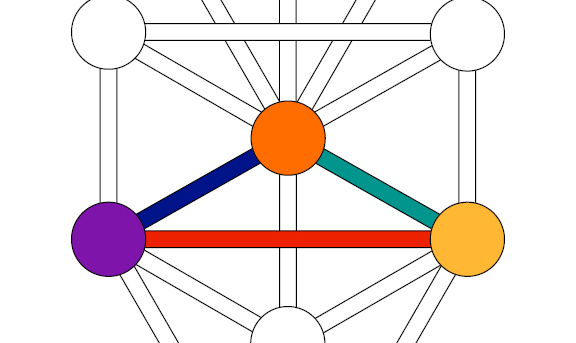
The three paths connecting Tiphareth, Hod, and Netzach—Ayin, Peh, and Nun—add up to 200, the enumeration of Resh, which means head. The card The Sun is attributed to the path of Resh on the Tree of Life.
But from a microcosmic point of view, we might say that we imitate the act of the Father when we dwell in our abodes in a way which is beautiful. It is not the purely instrumental act of dwelling which matters so much as the excessive and playful mode of dwelling—dwelling for its own sake, i.e., aesthetic enjoyment.
Thus Crowley also says of magick that it is the Art of Life Itself.
So if you’re looking to perform magick in the face of the coronavirus pandemic you might try two things:
- Expand your sense of self to fill the place where you currently live. Get to know every little nook and cranny of the physical building you occupy. Purge it of everything alien. Rearrange it—speak order into it—so that it reflects as closely as possible the divine order, i.e., consecrate it to the accomplishment of your will.
- Beautify it to the extent you can. Don’t just be stuck here. Make sure what you see when you open your eyes every day is what you want to see. Think of your home as the House of the Sun, i.e., Tiphareth. The House of God is the beautiful house. Make sure it remains that way.
The Symbolism of the O.T.O. Lamen
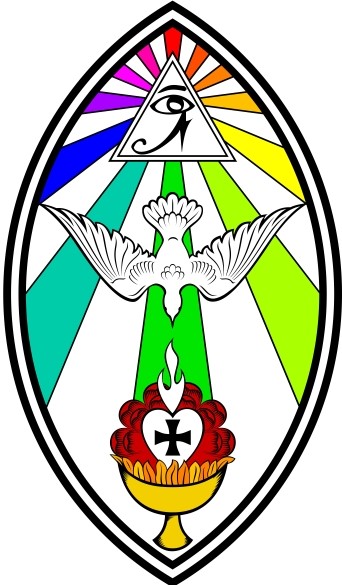
I spent a lot of time this weekend contemplating the lamen of O.T.O. (I was at a Kaaba Colloquium and seated much of the time in front of the podium.) It gave me some time to think about the symbols that appear in it.
One of the things that really struck me is how much symbolism of the Anahata chakra there is in the cup at the bottom of the sigil. The rose in the cup has two rows of six petals. The Anahata chakra is often represented as a lotus flower with twelve petals.
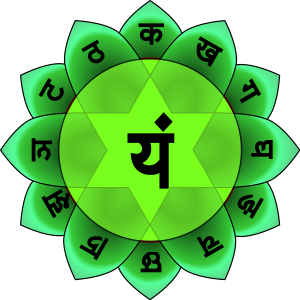
In the center of the rose is a flaming heart. The Anahata chakra is located in the center of the chest and is referred to the heart.
In Liber 777 column CXVIII, “Anahata (Heart)” is assigned to keys 4, 5, and 6, the Sephiroth Chesed, Geburah, and Tiphareth. Tiphareth is the 6th Sephira, and there are two rows of six petals each in the cup. In the center of the heart in the center of the rose, we see the cross. The mysteries of the Rose and the Cross are also associated with Tiphareth.
These three Sephiroth—Chesed, Geburah, and Tiphareth—form a downward pointing triangle, the interconnecting paths of which (Teth, Lamed, and Yod) add up to 49. The number 49 has a few occult meanings in Thelema. For example 49 is 72. Seven 7s appear in the sigil of A∴A∴. See also The Book of Lies, Chapter 49, where it is associated directly with Babalon.
This triad is also called “The Second Triad which is GOD” in Book of Lies chapter 0. The Tiphareth portion in particular is God in manifestation or Microprosopus, which we will return to later.
It’s also in this connection worth pointing out that the triangle formed by connecting Chesed, Geburah, and Tiphareth has the shape of a cup. This further strengthens its connection with Babalon and by extension the Priestess in the Gnostic Mass who fulfills the office of Babalon.
This grail of Babalon is also associated with Cheth, Cancer, and the number 69. In chapter 69 of The Book of Lies, we see this number associated with the Heavenly Hexagram, which we will return to shortly.
Switching focus to the Eye in the Triangle, we might associate it with the supernal triad of Kether, Chokmah, and Binah. They form a triangle whose interconnecting paths (Aleph, Beth, and Daleth) also add up to 7.
The eye itself can be thought of as the Eye of the Father, Horus. So while the lower portion of the lamen might be referred to the Priestess (by means of Babalon and the cup), the upper portion may be referred to the Priest.
The eye is also linked to the path of Ayin (which means “eye”). Like Cheth, Ayin also contains masculine and feminine archetypes, being associated with the hermaphroditic Baphomet. Neither the lamen of O.T.O. nor the offices of the Gnostic Mass imply strict gender dualities. This is in keeping with Crowley’s assertion in The Book of Thoth that
At first sight it would appear that the formula [of tetragrammaton] is the union of the extremely masculine, the big blond beast, with the extremely feminine, the princess who could not sleep if there was a pea beneath her seven feather beds. But all such symbolism defeats itself; the soft becomes the hard, the rough the smooth. The deeper one goes into the formula, the closer becomes the identification of the Opposites. The Dove is the bird of Venus, but the dove is also a symbol of the Holy Ghost; that is, of the Phallus in its most sublimated form. There is therefore no reason for surprise in observing the identification of the father with the mother.
We will return to his passage and the symbolism of the dove shortly.
The addition of Ayin (70) to the triangle itself (7) gives us 77, which has some significance in the context of O.T.O. being the enumeration of OZ, a goat.
So what we see in the two extremes of the lamen are the supernal triad of Kether, Chokmah, and Binah opposed to the triad of Chesed, Geburah, and Tiphareth. While the upper triangle refers to an active masculine-feminine (Ayin, OZ, the goat), the bottom triad refers to a passive masculine-feminine (Babalon, who receives every drop of blood in her cup). What about the dove between the two of them, seen descending from the Eye in the Triangle into the cup?
The dove has lots of significance loaded into it. By column XXXVIII in Liber 777, it is associated with the path of Daleth. The dove would then signify the divine love uniting the active masculine-feminine magical pole of the Priest (in his role as Chaos or Yod tetragrammaton) with the passive masculine-feminine magical extreme of the Priestess (in her role as Babalon or Heh tetragramaton). This unification occurs at the HRILIU moment of the Gnostic Mass. According to Liber 418, HRILIU is the “shrill scream of orgasm”. In The Heart of the Master it is described as “The Voice of the Dove”.
The dove is also symbolic of the Holy Spirit. (See Matthew 3:16, Mark 1:10, Luke 3:22, and John 1:32.) This same equation between the dove and the Holy Spirit shows up in the Anthem of the Mass. (“Glory and worship in the highest, Thou Dove, mankind that deifiest”) (This analysis is extended here.) Like the two extremes of the lamen, it is a symbol containing both male and female aspects.
For of the Father and the Son
The Holy Spirit is the norm;
Male-female, quintessential, one,
Man-being veiled in Woman-form.
Crowley extends the analysis in the passage from the Book of Thoth quoted above when he says, “The Dove is the bird of Venus, but the dove is also a symbol of the Holy Ghost; that is, of the Phallus in its most sublimated form.”
So we can think of the dove not only as the divine love uniting the supernal father with the supernal mother, but also as the male-female creative force or word of the Father—his seed or sperma—transmitted into the womb of the Mother. This is reflected in the Mass when, breaking a particle off of the host and elevating it, the Priest declares, “TOUTO ESTI TO SPERMA MOU. HO PATÊR ESTIN HO HUIOS DIA TO PNEUMA HAGION.” (“This is my Seed. The Father is the Son through the Holy Spirit.”)
As I have shown previously, the particle of bread represents the Iota, Yod, or “Secret Seed” of the Priest himself. It is identical with the Lord Secret and Most Holy of the Mass, whose office is represented by the serpent crown. When this seed is depressed into the cup, it becomes the Holy Spirit, Harpocrates, the Babe in the Egg, the creative breath, all of which are captured in the symbol of the dove. But just as importantly, Harpocrates or the Secret Self is also the Holy Guardian Angel.
This is an important point of doctrine for our Church, as the Holy Spirit of Ecclesia Gnostica Catholica is not the Holy Spirit of Christianity. Rather, it is a symbol of the Holy Guardian Angel of each person.
This interpretation is supported if we extend the Tree of Life symbolism implicit in the lamen. If the Eye in the Triangle represents the supernal triad of Kether, Chokmah, and Binah, and if the flaming cup represents the triangle of Chesed, Geburah, and Tiphareth, then the path connecting the two of them, by means of which the dove descends, would be Gimel. Of this path, Crowley, in The Book of Lies chapter 42, says:
The Masters of the Temple … come from the Great Sea, Binah, the City of the Pyramids. V.V.V.V.V. is indicated as one of these travelers; He is described as a camel … because “camel” is in Hebrew Gimel, and Gimel is the path leading from Tiphareth to Kether, uniting Microprosopus and Macroprosopus, i.e., performing the Great Work. The card Gimel in the Tarot is the High Priestess, the Lady of Initiation; one might even say, the Holy Guardian Angel.
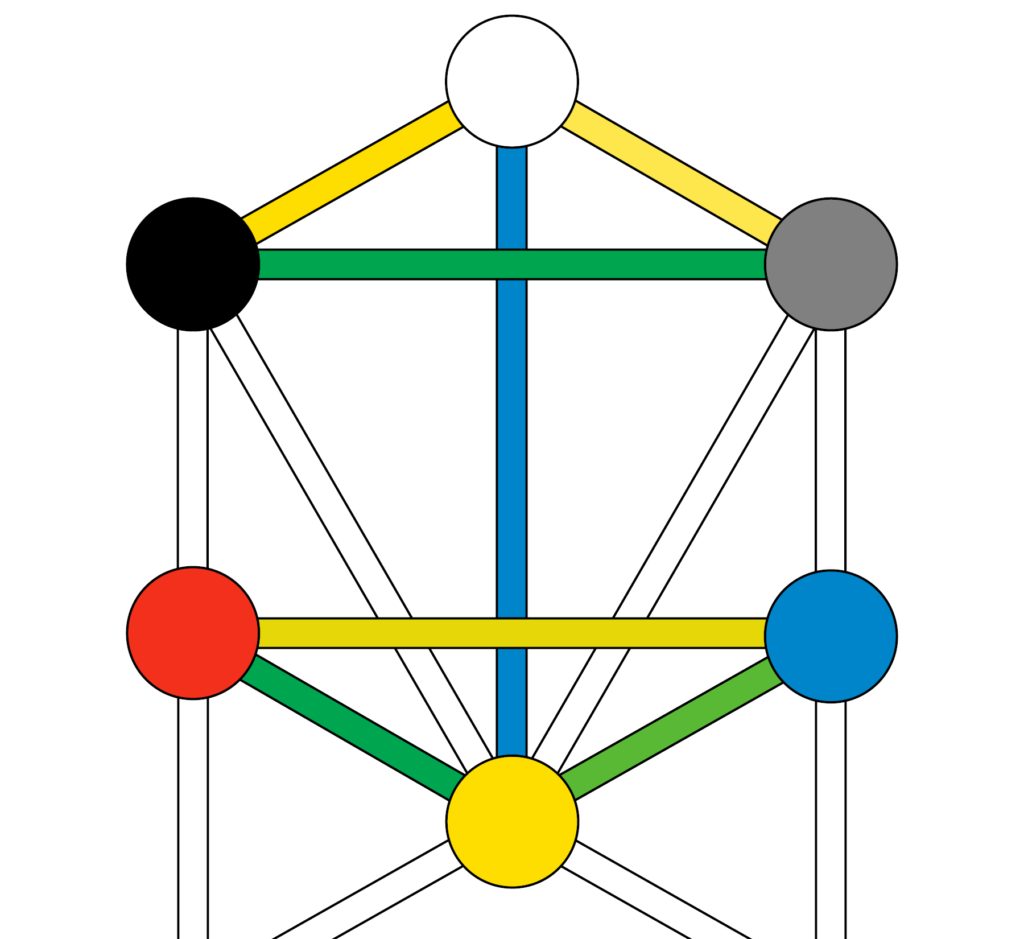
In this passage we have Crowley linking the path of Gimel not only with V.V.V.V.V. but also with the Holy Guardian Angel and the initiator. S/he (again, we see the masculine and feminine combined) is the One who mediates between the divine individual (microprosopus) and the supernal divine (macroprosopus), thereby enabling the candidate to perform the Great Work. This is the upward path, the Path of Return described in “One Star in Sight,” whereby the Son (the Angel) sets the Daughter (the aspirant) on the throne of the Mother (Binah).
But in the symbolism of the O.T.O. lamen, we do not see a journey upward. Instead, we see a journey downward. We see the dove of the Holy Spirit or the Holy Guardian Angel descending from the supernal triad of the Father into the cup, which is symbolic of microprosopus, God in manifestation. And again, this mirrors the symbolism of the Holy Hexagram we see described in The Book of Lies chapter 69: “Plunge from the height, O God, and interlock with Man!” The whole figure is described as a glyph of “the Great Work”.
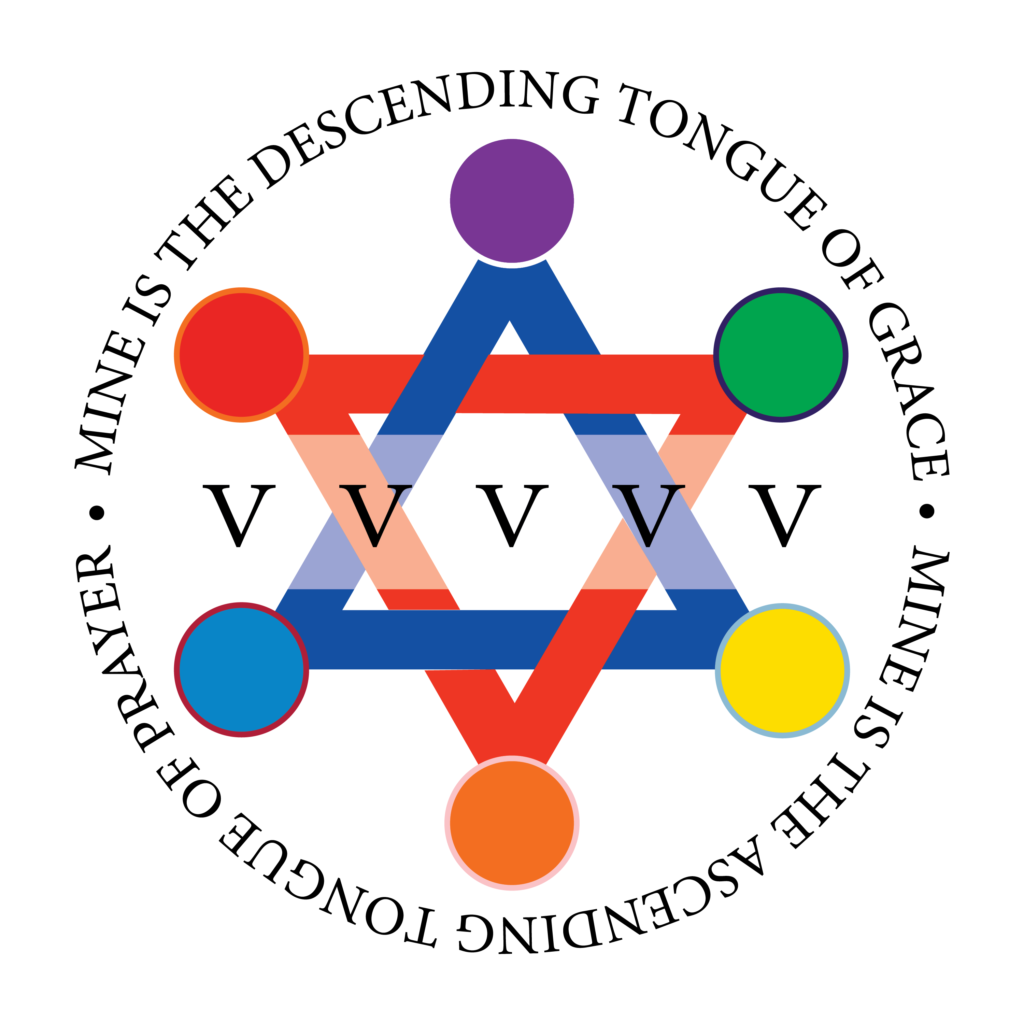
So in other words, in the lamen of the O.T.O., we are witnessing a symbol of the Great Work, this time not from the point of view of the candidate aspiring to Binah, but rather from the point of view of macroprosopus incarnating by means of the Holy Guardian Angel. Again, “This is my Seed. The Father is the Son through the Holy Spirit.”
This symbolism further reflects and reinforces my interpretation of Part VIII of the Gnostic Mass. Assuming the O.T.O. lamen has any connection with the central private and public rite of O.T.O., then the lamen indicates the same process at play in the Gnostic Mass where, by isolating the Secret Seed of himself, the Priest, in his role as Chaos, is incarnating his own Holy Guardian Angel. By consuming it, he is uniting himself with his HGA. The congregants are doing the same thing except perhaps in a more attentuated way. This seems to me the best way to make sense of Crowley’s claim in Magick in Theory and Practice chapter XX that:
[By doing eucharistic magick t]he magician becomes filled with God, fed upon God, intoxicated with God. Little by little his body will become purified by the internal lustration of God; day by day his mortal frame, shedding its earthly elements, will become in very truth the Temple of the Holy Ghost. Day by day matter is replaced by Spirit, the human by the divine; ultimately the change will be complete; God manifest in flesh will be his name.
This is the most important of all magical secrets that ever were or are or can be. To a Magician thus renewed the attainment of the Knowledge and Conversation of the Holy Guardian Angel becomes an inevitable task; every force of his nature, unhindered, tends to that aim and goal of whose nature neither man nor god may speak, for that it is infinitely beyond speech or thought or ecstasy or silence. Samadhi and Nibbana are but its shadows cast upon the universe.
But then if this same process is also reflected in the O.T.O. lamen, then it stands to reason that the central secret of O.T.O. probably also involves this same mystery of the incarnation of the Angel.
Babalon and the Mass
In the Gnostic Mass, the Priest takes up the role of CHAOS, who is associated with Chokmah. He serves the function of the logos or the word, which is also the phallus or the creative aspect of the Father. From his own body, he produces the seed (sperma). By means of an alchemical process, this seed will be transformed into the Mercurial Serpent, the Baphomet or Christos, the Philosopher’s Stone, etc. This product of the first operation is strongly associated with the Sun, with the path of Ayin, with Hod, but also with Kether and even the entire Tree of Life (if you draw the number 8 on it). But before diving deeper into the nature of the product, I’d like to first examine the process itself, in particular the role played by the Priestess.
If the Priest is taking up the work of CHAOS and the spiritual significance of Chokmah, then his counterpart the Priestess takes up the role of BABALON and the spiritual significance of Binah. What is her contribution, and what does that contribution imply about the nature of the God-Man produced by the operation?
In the Creed we recite, “And I believe in one Earth, the Mother of us all, and in one Womb wherein all men are begotten, and wherein they shall rest, Mystery of Mystery, in Her name BABALON.”
As compared with the treatment BABALON gets in The Vision and the Voice, this is rather terse and tends to understate her importance in the spiritual system of Thelema. But I think that has less to do with the importance of BABALON herself than the context. In The Vision and the Voice, Crowley was documenting his ascent across the Abyss to the grade of Magister Templi. There, BABALON is considered initiator. In the Gnostic Mass, by contrast, she serves as a cosmological or metaphysical principle which is relied upon in the context of a discrete alchemical operation.
This remark will make no sense to those who think the Gnostic Mass is a crossing-the-Abyss allegory culminating in the candidate (the bread particle) merging with the all-mother (the wine in the cup). But it will make perfect sense if you accept that, by at least Part VI of the Mass, the Priest is not a candidate aspiring to Binah but rather the representative of CHAOS performing a magical operation with the Priestess in her role as BABALON, with the desired effect being the production of a Divine Being at Tiphareth. In other words, the operation of the Mass is meant to move the Word down the Tree of Life from Chokmah to Tiphareth where it becomes incarnated as God Manifest. If the particle is consciousness as such, then it is consciousness-in-time (the Sun) in its finished state in the cup. But then what is it about the cup—the symbol of Our Lady—that allows this to take place?
From the article of the Creed, we find BABALON identified with Earth, Mother, and Womb. The wording suggests she is the sub-lunary context into which we are born, wherein we live, and which we eventually pass away into. In other words, she is nature.
But what is nature from a Thelemic perspective? I would like to suggest that it is neither the object studied in the field of physics, nor is it merely inert matter. Neither of these designations fits with the spiritual function of Binah, which BABALON is also associated with. The function of Binah in Kabbalah is to transform pure thinking as such (associated with Chokmah) into something like a determinate set of concepts of creation. So if we think of Chokmah as corresponding with the neoplatonic idea of nous or of pure mind, then Binah corresponds with the concept of the world-soul, nature inwardly considered as a hierarchical system of ideas or categories of existence.
Importantly, Binah represents the first point in the movement from out of Ain/Ain Soph where limitation and hence form are introduced. Ain, Ain Soph, and Kether are words for a formless All or One or None. Chokmah is this pure (N)one reflected in thinking. Binah is where differentiation is first introduced. The thought of creation (which is something like a mere urge at Kether and Chokmah) now receives articulation. It is presumably for this reason that Crowley associates Binah with the Vissudha chakra which is at the throat. It is at the throat that thoughts are articulated into speech.
So in the figure of BABALON, we see the union of the concept of nature with the concept of form or formation. While this appears to be an odd pairing, it in fact harkens back to the ancient Greek concept of nature which Aristotle articulated in the Physics, particularly in Book B.
The ancient Greek word for nature was phusis, from which we get our word physics. While we tend to think of nature as various stuff (natural things, things of nature, etc.), Aristotle said that phusis is first and foremost a principle of development (arche kineseus). The function of this principle in each natural thing (phusei onta) was to cause it to change in such a way that it comes into its end (telos). This end or finished state was understood as a particular kind of appearance (eidos) or form (morphe).
So for example, the function of the nature of an oak tree is to guide the development of an acorn into a full-grown oak by way of its intermediate stages. The nature of the oak (the image or form of the full-grown oak) serves as a kind of blueprint (paradigma) for change, so that the change is not chaotic but is rather orderly and results in the proper end (the full-grown tree). To put it another way, the nature of the tree is responsible for delivering it into its final form or appearance, which is the full expression of its being as an oak. This makes natural growth a circular process from form (implicit) to form (explicit) back to form (implicit) again in the appearance of the new acorn.
This explains why Aristotle said that the being of a natural thing is its form or appearance (morphe) and not the matter (hule) composing it. Things are intelligible to us by virtue of their ends. What differentiates an action such as running from another action such as rhetoric is the end it aims at. The same thing goes for growing things. They’re differentiated by the final form or appearance they aim at in their growth. Matter is only of secondary importance here. The delivery of the thing into its final form requires the presence of things like food, air, water, and sunlight, but these are merely enabling conditions. The essence or being of the thing is always its form or final, outward, full-grown appearance. It is that image “lurking in the background” which drives change in a particular direction and hence constitutes the characteristic movement or development of the thing which differentiates it from other things.
Incidentally, this is why Aristotle makes the rather odd proclamation that actuality precedes potentiality. On the face of it, the statement is false. It makes more sense when you realize that the word Aristotle uses for actuality (energeia or entelecheia) actually means something like “being in the work [ergon]” or “being in the end [telos],” whereas the word for potentiality—dunamis—has the connotation of matter (hule) or the workshop that something is made in where there are tools and raw materials laying around. Placing something into its end always takes priority (ontologically) over the means or circumstances under which it is done, and therefore “actuality precedes potentiality”.
Now we’re in a position to understand much better the spiritual function served by the Priestess in the Gnostic Mass—as well as “the feminine” in any magical operation.
While the Priest provides the material (hule) for the operation in the form of the seed or particle, it is the function of the Priestess to give that seed form (morphe)—to in-form it—in the “womb”. She is responsible for taking the seed and “delivering” it (like a mother or midwife) into appearance (eidos). In the context of the Mass, that which is delivered into manifestation is the God-Man, which is associated with Tiphareth, the point on the Tree of Life where God is manifest for the first time. So while the Priest is responsible for the potentiality or potency of the Christos, it is the Priestess who delivers Him into appearance or form, and therefore she is responsible for His being.
You can see this on a very concrete level in the Mass itself. The particle is crumbly. It lacks integrity. The cup has definite borders. It provides integrity.
(For that matter, compare the oaths of the Minerval and I°s, which correspond with Chokmah and Binah respectively by their chakra attributions. It’s the exact same thing, only now the candidate is the crumbly particle being supplied with integrity and therefore with the possibility of fulfilling an end.)
But by delivering the seed into manifestation, BABALON or the Priestess also delivers it to death. This is because there is no way to deliver into manifestation without also introducing becoming as a condition. A beginning (genesis) is a change from one thing into another. While things abide in beingness, they also keep changing. This change tends toward decay and ultimately death or passing back out of existence. As the German philosophers Hegel said in his Science of Logic, for finite beings “the hour of their birth is the hour of their death.” Due to the conditions that must be put into place for the introduction of something into the world, to enter the world is to immediately incur the penalty of death. This is captured in the nature of BABALON herself as feminine creator-destructor. It is also captured in the two-sided nature of the “sword” leading from Tiphareth up to Binah.
What this means is that the product of the Mass—the eucharist—has both the qualities of life and death, as these are unified in every manifest being. But it is more than this. For while Christ comes from blood and water, there is also the Holy Spirit, the third witness on Earth. This dove-serpent which deifieth man is subject to conditions of life and death. But by means of gross generation (biological reproduction), this spirit is able to utilize the process of life-death for the purpose of its own self-expression and manifestation down through the ages, thereby transcending those very same conditions. Like the example of the eidos of the oak tree moving from implicit to explicit and back again, we are witnessing here another circular process. The Holy Spirit separates from itself in its transmission, yet this separation is the very act by which it maintains its transcendental integrity. “The secret of generation is death.”
And while the blood is a reflection or image of the Father, and the water is a reflection or image of the Mother, the Holy Spirit is a reflection or image of God. It is an image or eidos which, just like the image or eidos of an oak tree, has paradigmatic power over the being it stands in relationship to. It calls it forth into its full-blown, most true configuration. While for an oak tree, that image is merely the fully grown oak, for an individual it is their true self. In other words, the serpent-Christ emerging from the Eucharistic operation is the Augoeides. By consuming the eucharist, you unite yourself with your genius or Angel. This is why Crowley says continually doing Eucharistic magic will inevitably lead toward Knowledge and Conversation.
